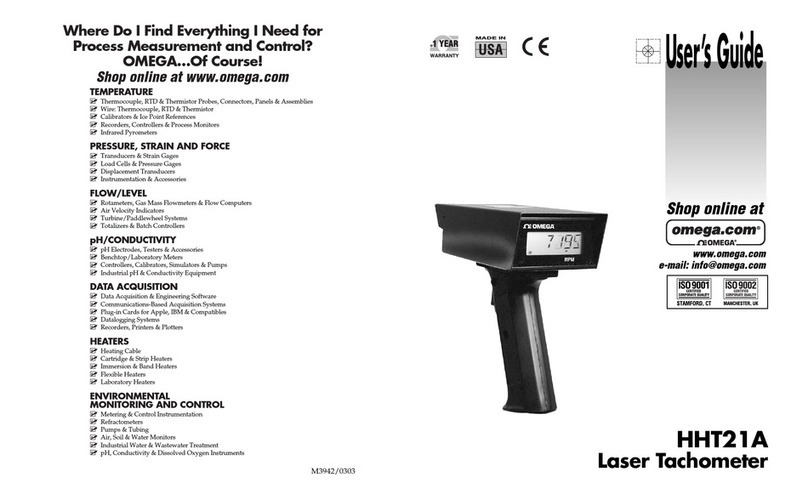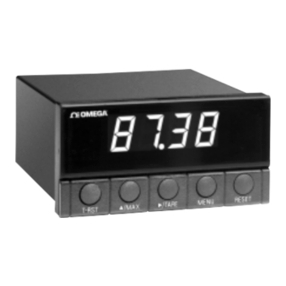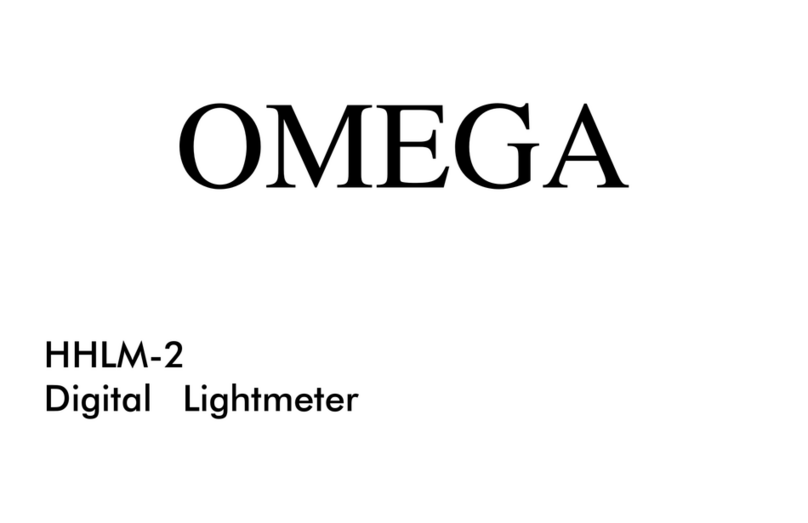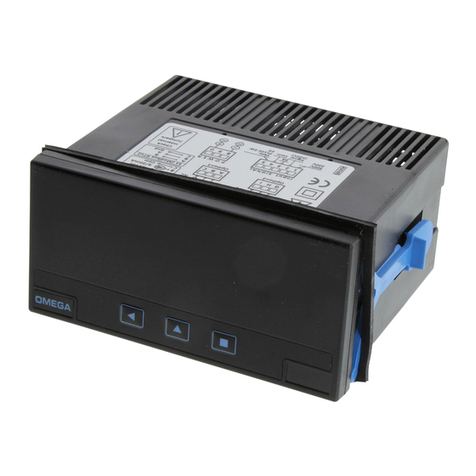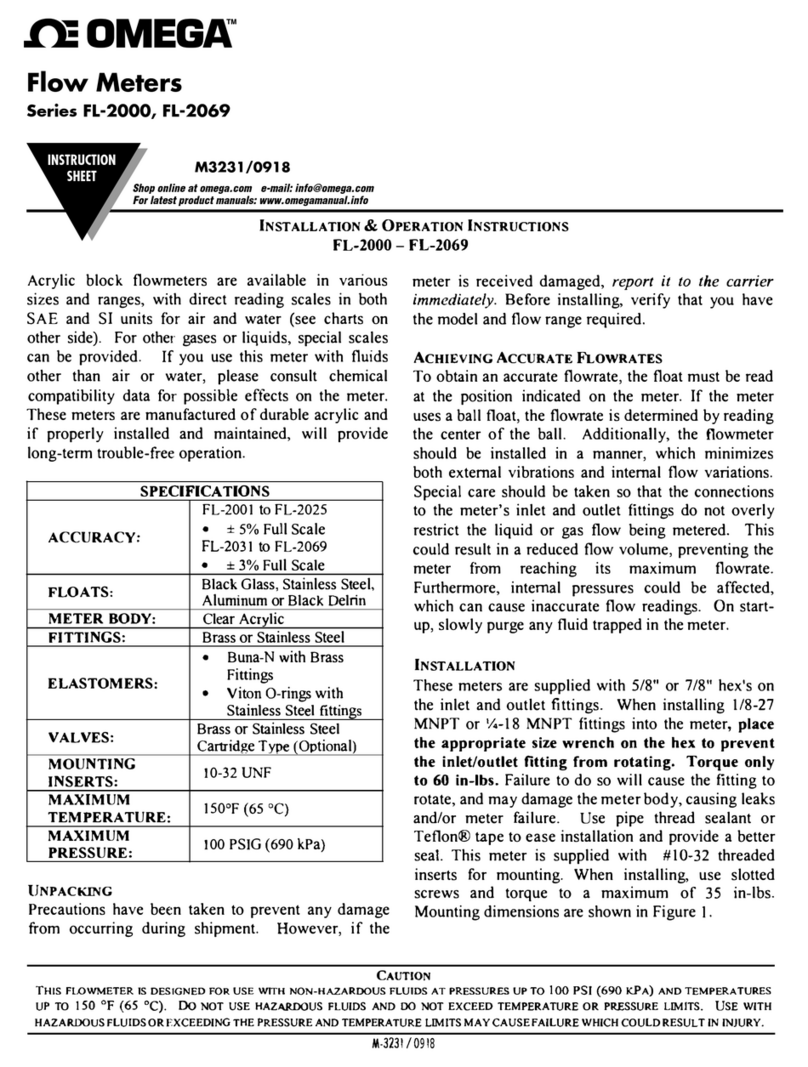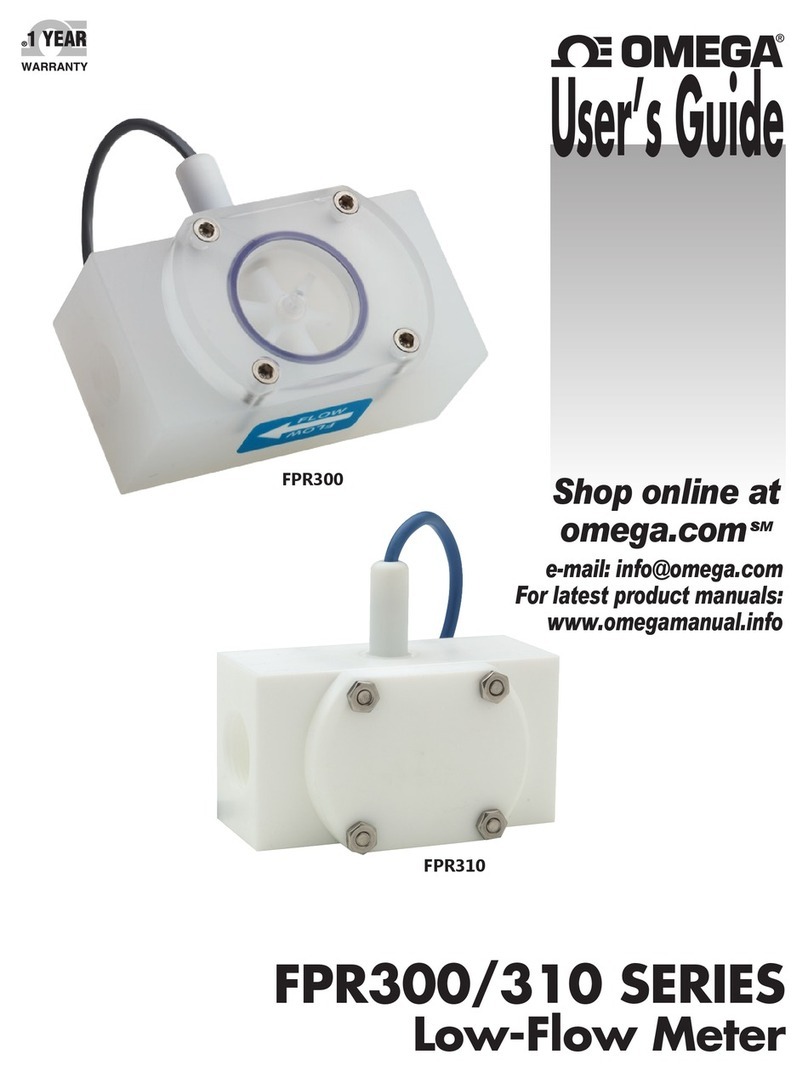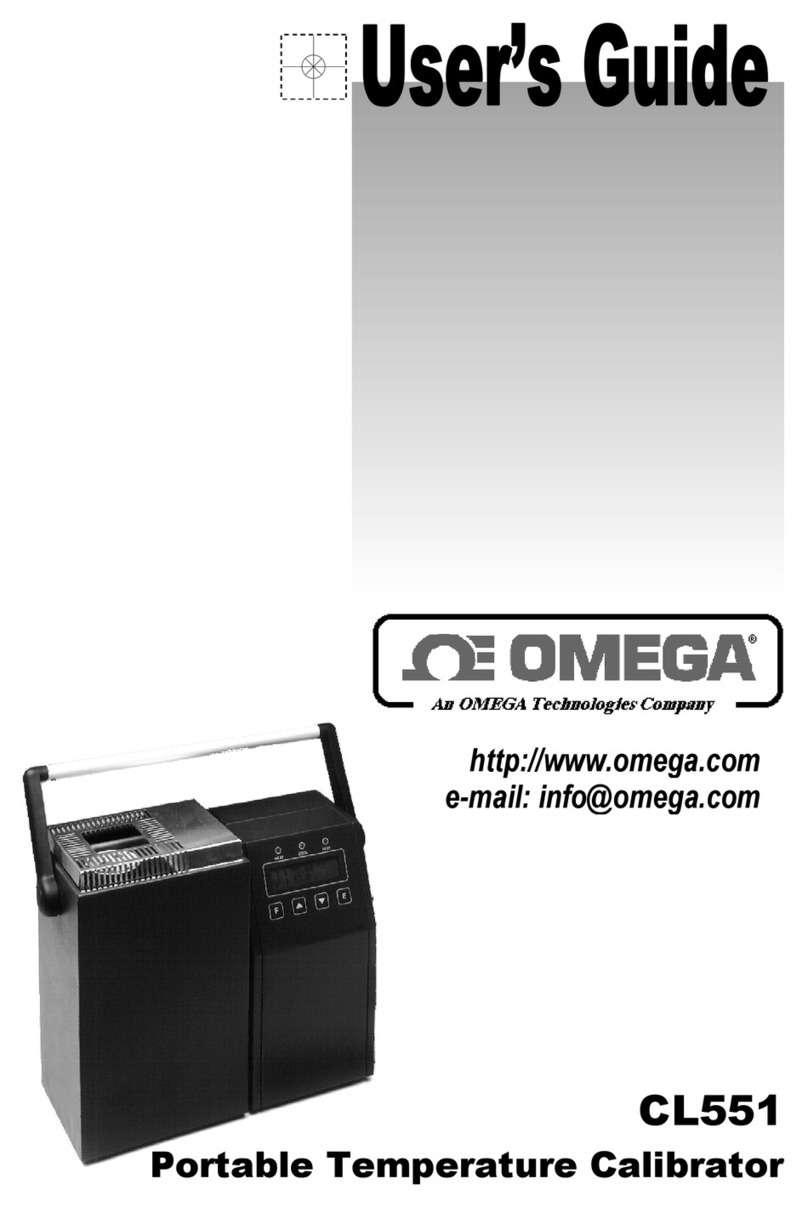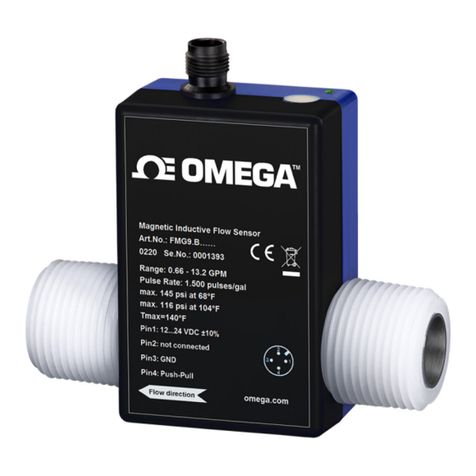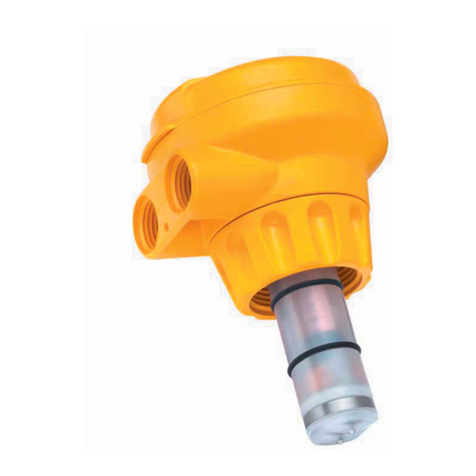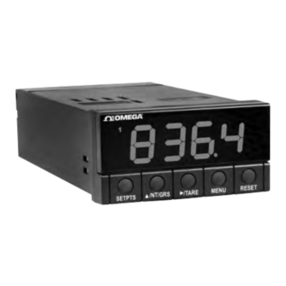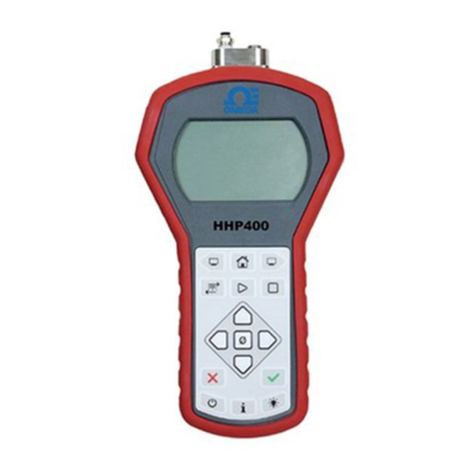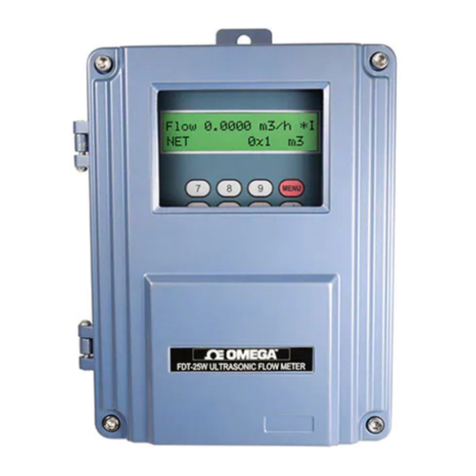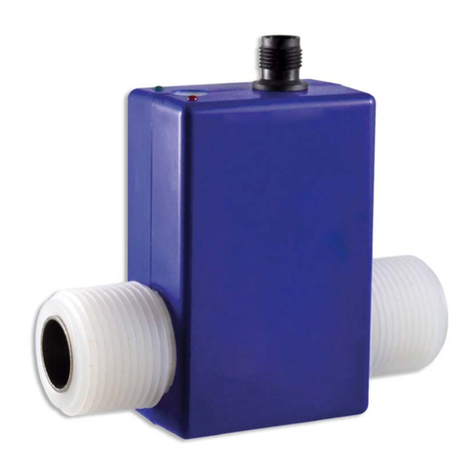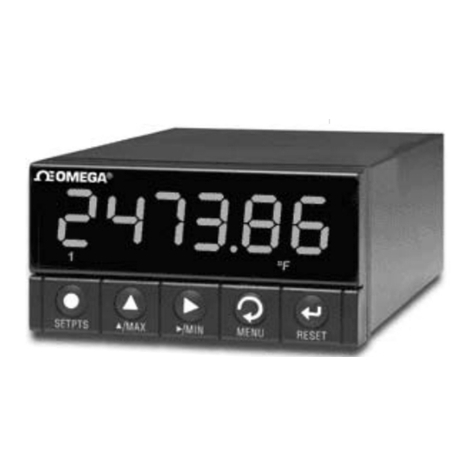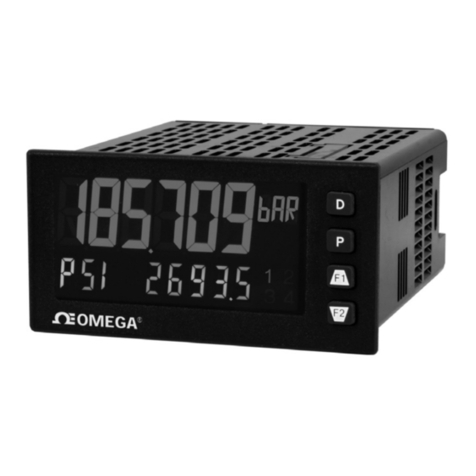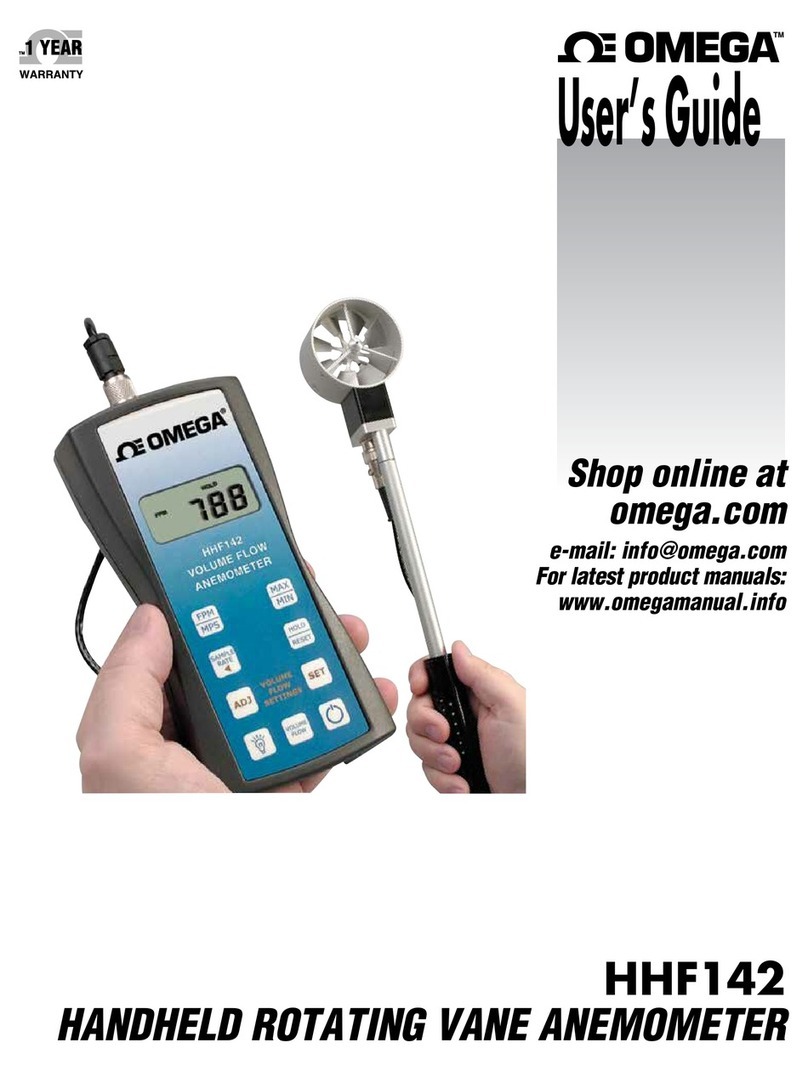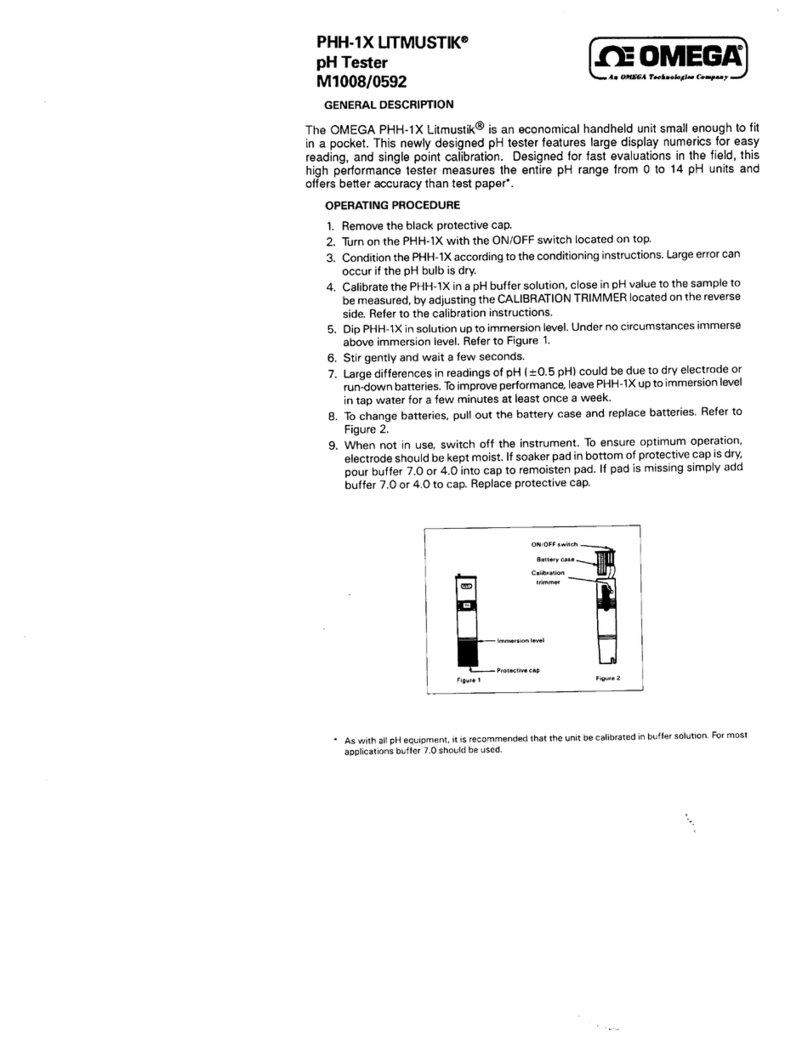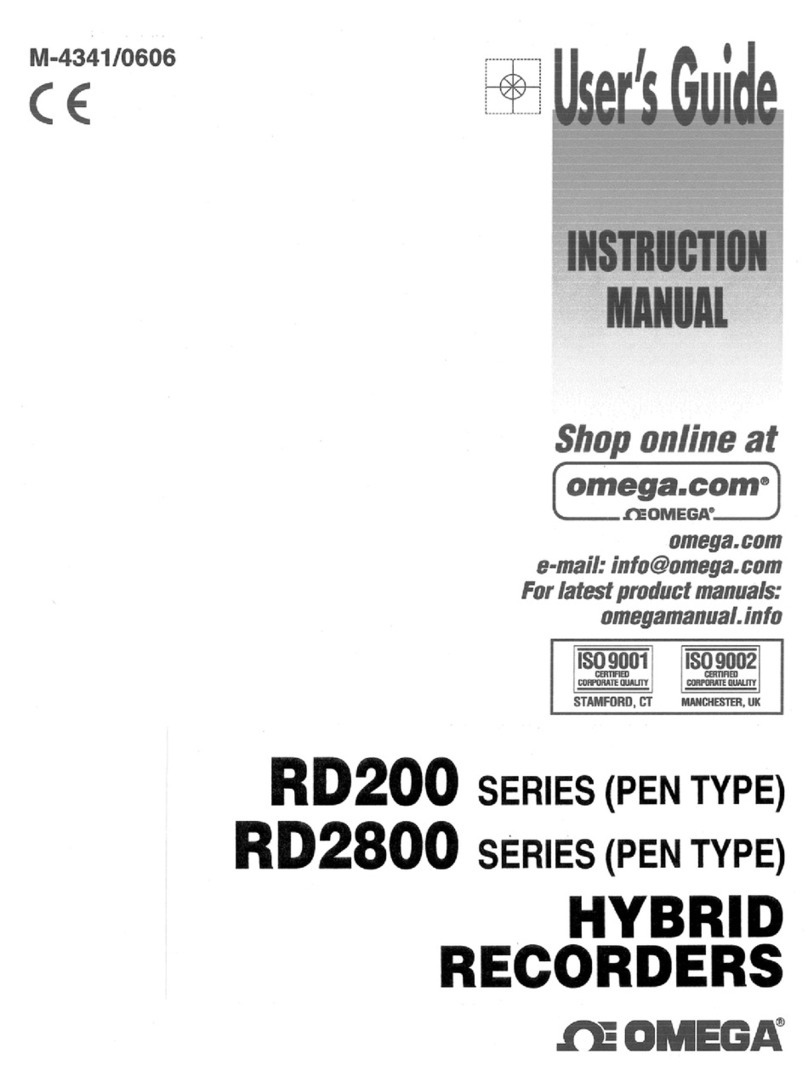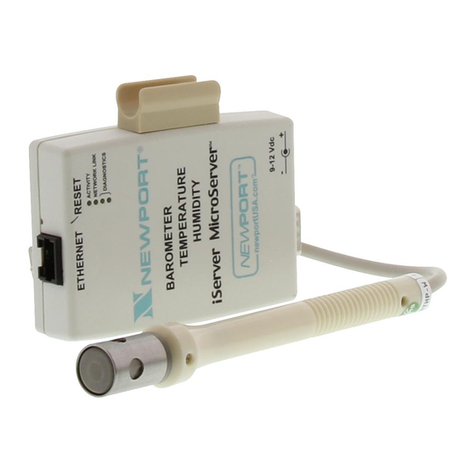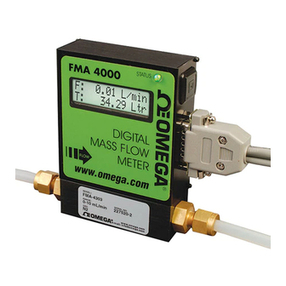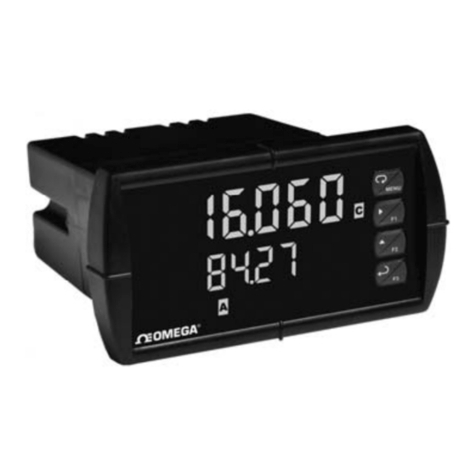
If excessive vacuum is applied to a pressure-only gauge, the display
will indicate -Err until the vacuum is released. Applying vacuum to
a gauge designed for pressure may damage the pressure sensor.
If excessive pressure is applied (112.5% over range), an out-of-
range indication of 1 – – – or 1.–.–.– will be displayed depending
on model.
Display Backlighting (DPG3600, DPG5600 models only)
Display backlighting can be turned on by momentarily pressing the
front button whenever the gauge is on. The backlighting will turn
on for one minute and then automatically shut off. This also restarts
the auto shutoff timer. The display backlighting will not be apparent
under bright lighting conditions.
Minimum and Maximum Readings
Gauges are normally configured with minimum and maximum
capture functions enabled. One or both can be disabled in the
Advanced Configuration mode.
Minimum and maximum readings are continuously stored and updat-
ed whenever the gauge is on. The stored readings can be manually
cleared if desired. The MAX and MIN memory is also cleared when-
ever the gauge is off unless configured to save the readings.
Press and hold the button for about 1 second until MAX is displayed
alternating with the units. The maximum reading will be continu-
ously updated. The gauge may be left in this mode.
After MAX is displayed, press and hold the button for about 1 sec-
ond until MIN is displayed alternating with the units. The minimum
reading will be continuously updated. The gauge may be left in this
mode. If excessive vacuum is applied to a pressure-only gauge
while in this mode, the display will indicate –Err until the MAX/MIN
readings are cleared.
After MIN is displayed, press and hold the button again for about 1
second until * * * * is displayed. The MAX and MIN memory is not
erased and the gauge returns to normal operation with the display
indicating the current reading.
Press and continue to hold the button until the display indicates clr
MX/MN (about 3 seconds total) and then release the button. Both
maximum and minimum values are cleared and the gauge returns
to the normal mode and displays the current pressure.
Shut-Down
To shut off the gauge manually at any time, press and hold the button
until the display indicates OFF (about 5 seconds) and then release.
When an auto shutoff timer is used, the display indicates OFF five
seconds prior to auto shutoff. The button can be pressed to keep
the gauge on. The auto shutoff and backlight (if equipped) timers
are reset whenever the button is pressed and released.
If the gauge set up without auto shutoff (on/off operation) it will stay
on until manually shut off or until the batteries are depleted. Turn
gauge off when not in use to conserve battery life.
Engineering Unit Selection
Engineering unit selection is done via internal buttons to help pre-
vent accidental or unauthorized changes. The selected engineering
unit is stored in non-volatile memory and will be retained even with
the gauge off or batteries removed. The available engineering units
depend on the sensor range and available display resolution.
Compound (inHg/PSIG) gauges must be changed to display single-
unit vacuum/pressure readings in the Advanced Configuration mode
before different engineering units can be selected.
The default engineering units are mathematically converted to the
newly selected engineering unit. When the gauge is powered up,
the originally configured range is displayed and then the conversion
with the selected engineering unit is displayed.
To change engineering
units remove the rear
cover to gain access to
the two internal buttons
located near the lower
right and left corners of
the circuit board.
With the gauge powered
up, press and hold the UP
button. Release the button
when the engineering units
begin to flash.
Use the UP and DOWN but-
tons to scroll through the list of engineering units available for the
pressure range of the sensor.
When the desired units are displayed, press and release the front
button to save the selection and return to normal operation.
Note: The gauge will automatically revert to normal operation if no
buttons are operated for approximately 15 seconds.
Replace the rear cover taking care not to pinch the power wires
between the cover and the case.
Read these instructions before using the gauge. Configuration may
be easier before installation. Contact the factory for assistance.
These products do not contain user-serviceable parts. Contact us
for repairs, service, or refurbishment.
Gauges must be operated within specified ambient temperature ranges.
Outdoor or wash down applications require a NEMA 4X gauge or
installation in a NEMA 4X housing.
Use a pressure or vacuum range appropriate for the application.
Use fittings appropriate for the pressure range of the gauge.
Due to the hardness of 316 stainless steel, it is recommended that
a thread sealant be used to ensure leak-free operation.
For contaminated media use an appropriate screen or filter to
keep debris out of gauge port.
Remove system pressures before removing or installing gauge.
Install or remove gauge using a wrench on the hex fitting only. Do
not attempt to turn gauge by forcing the housing.
Good design practice dictates that positive displacement liquid
pumps include protection devices to prevent sensor damage from
pressure spikes, acceleration head, and vacuum extremes.
Avoid permanent sensor damage! Do not apply vacuum to non-
vacuum gauges or hydraulic vacuum to any gauges.
Avoid permanent sensor damage! NEVER insert objects into
gauge port or blow out with compressed air.
Gauges are not for oxygen service. Accidental rupture of sensor dia-
phragm may cause silicone oil inside sensor to react with oxygen.
Gauge reference models read zero with the gauge port open.
Compound ranges read vacuum in inches of Mercury, pressure in
psig, and zero with the gauge port open.
1000 psi and higher sensors are a sealed reference type. They read
zero with the gauge port open are internally referenced to 14.7 psi.
They are functionally similar to gauge reference sensors.
Absolute reference gauges read zero at full vacuum and atmo-
spheric pressure with the gauge port open. Note that readings of
atmospheric pressure vary continuously.
Power-Up
Press and hold the front button for approximately 1 second.
The display is tested, the default full-scale range is indicated, the
full-scale range in the selected units are indicated, the display is
tested again, then the actual pressure and units are displayed.
Power-Up With Zero
This applies to gauge reference models only. Absolute reference
gauges do not use the zero feature since they read atmospheric
pressure under normal conditions.
Be sure the gauge port is exposed to normal atmospheric pressure
and no pressure is applied. The zeroing function is only activated
at each power-up and the stored zero correction is erased when
the gauge is shut off.
Press and hold the front button. The display is tested and then oooo
is displayed. The gauge is now zeroed. Release the button and the
full-scale range in the selected units are indicated, the display is
tested again, then the actual pressure and units are displayed.
Attempting to zero the gauge with pressure greater than approxi-
mately 3% of full-scale pressure or vacuum applied will result in an
error condition, and the display will alternately indicate Err 0 and
the actual measured pressure. The gauge must be powered down
to reset the error condition.
Normal Operation
Following the start-up initialization, the display indicates the pres-
sure reading updated approximately 3 times per second. The auto
shutoff timer starts when the gauge is powered up or whenever the
button is pushed, unless the gauge shutoff time was set to zero for
on/off operation.
Types of Gauges
Auto Shutoff Time Selection
Auto shutoff time selection is done via internal buttons to help
prevent accidental or unauthorized changes. The selected shut off
time is stored in non-volatile memory and will be retained even with
the battery off or batteries removed.
Remove the rear cover to gain access to the two internal buttons
located near the lower right and left corners of the circuit board.
With the gauge powered up, press and hold the DOWN button.
Release the button when the auto shutoff time is displayed.
The lower display will indicate AST M if the time displayed is in
minutes, and AST H if it in hours.
An auto shutoff time of 0 signifies that the auto shutoff feature is
disabled and the front button turns the gauge on and off.
Use the UP and DOWN buttons to select 0, 1, 2, 5, 10, 15, 20 or 30
minutes, or 1, 2, 4, or 8 hours.
When the desired time is displayed, press and release the front but-
ton to save the selection and return to normal operation.
Note: The gauge will automatically revert to normal operation if no
buttons are operated for approximately 15 seconds.
Replace the rear cover taking care not to pinch the power wires
between the cover and the case.
Advanced configuration requires a pass code for access and allows
more features to be configured.
Remove the rear cover to gain access to the buttons located near
the lower right and left corners of the circuit board.
With the gauge off, press and hold the UP button. Then press the
front button. Release all buttons when the display indicates CFG
and the program version then the full-scale range is indicated and
the display is tested.
The display then indicates _ _ _ _ with the first underscore blink-
ing, and with CFGPC (configuration pass code) on the character
segments.
Note: The gauge will automatically revert to normal operation if
no buttons are operated for approximately 15 seconds. To cancel
and return to normal operation, press and release the front button
without entering any pass code characters.
Pass Code Entry
The factory default is 3510, but this may be changed by the user
under the Pass Code Configuration section.
1. Use the UP or DOWN buttons to set the left-most digit to 3.
2. Press and release the front button to move to the next position.
The 3 will remain, and the second position will be blinking.
3. Use the UP or DOWN buttons to select 5.
4. Press and release the front button to index to the next position.
35 will remain, and the third position will be blinking.
5. Use the UP or DOWN buttons to select 1.
6. Press and release the front button to index to the next position.
351 will remain, and the fourth position will be blinking.
7. Use the UP or DOWN buttons to select 0.
8. Press and release the front button to proceed with configuration
procedures.
If an incorrect pass code is entered, the gauge will return to the
start of the pass code entry sequence.
Factory/User Configuration
The upper display section will be blank, and the lower section will
display either USER_ or FCTRY.
If USER_ is selected, the user configuration can be modified as
described in the following steps.
To select USER_, press and release the DOWN button.
The lower display will indicate USER_.
Press and release the front button to continue.
If FCTRY is selected, the existing user configuration will be replaced
by the original factory configuration.
To select FCTRY, press and release the UP button.
The lower display will indicate FCTRY.
Press and release the front button to restore the factory configura-
tion and restart the gauge.
Max/Min Configuration
Use the UP and DOWN buttons to select from the following:
MX/MN Both highest and lowest values will be captured
MX/--- Only highest value will be captured
--/MN Only lowest value will be captured
--/-- Capture feature is disabled
Press and release the front button to move to the next parameter.
Basic Configuration
Installation Precautions
DPG 3500, 3600, 5500, 5600 Series Digital Pressure Gauges
2
Advanced Configuration
Operation
Basic Configuration—continued
Operation—continued
Function Button Prompt (Release Button)
On Press for 1
second
Display test > default units > selected
units FUll scale > display test >
actual reading
Zero
(gauge ref.
only)
Press and
hold
Display test >
oooo
> default units >
selected units FUll scale >
display test > actual reading
Hi reading Press/hold Max > max. reading & units
Lo reading Press/hold MIN > min. reading & units
Exit Hi/Lo Press/hold
> actual reading
Clear Hi/Lo Press/hold Max > Clr mx/mn > actual reading
Clear, off Press/hold Max > Clr mx/mn > OFF
